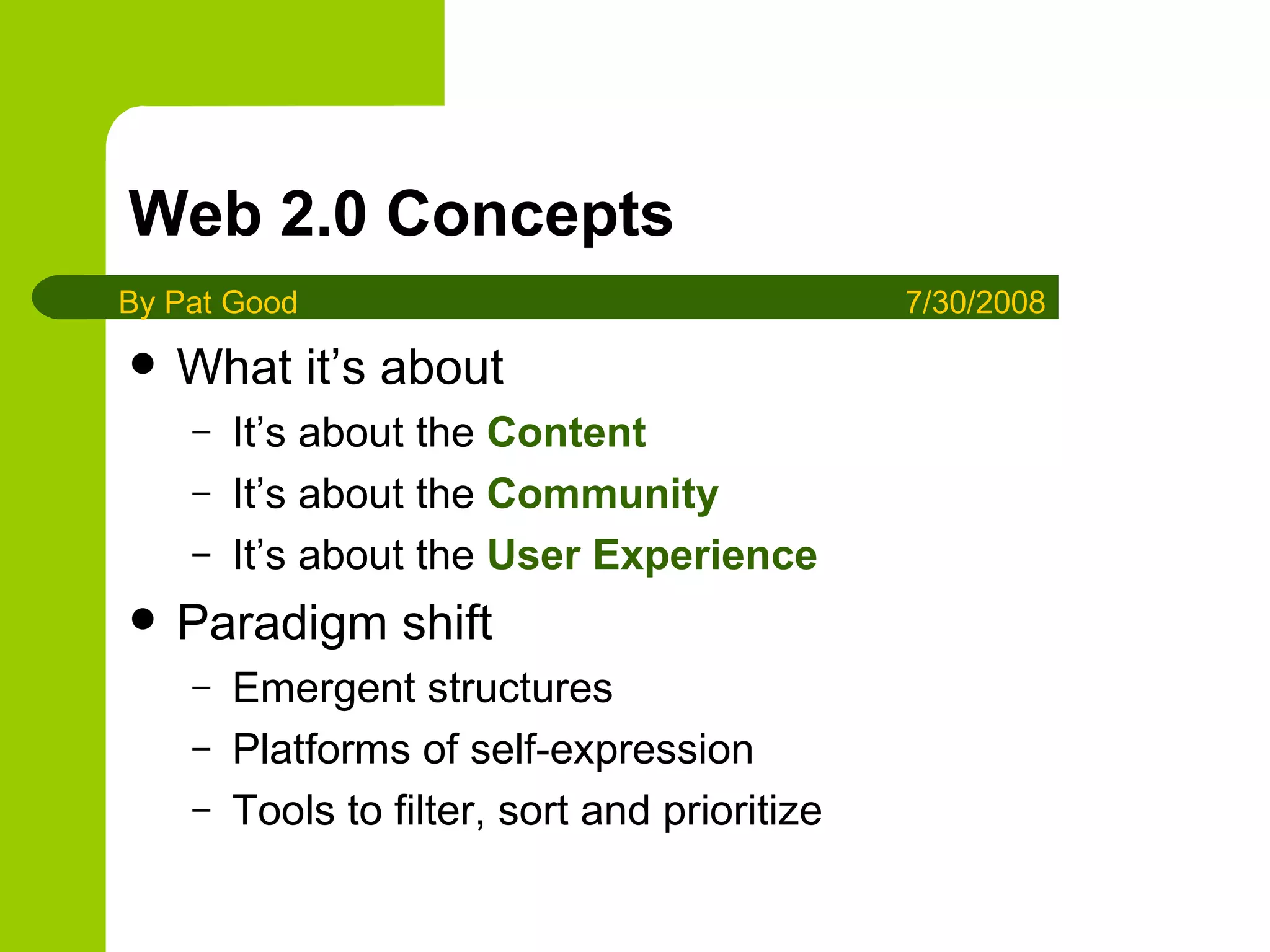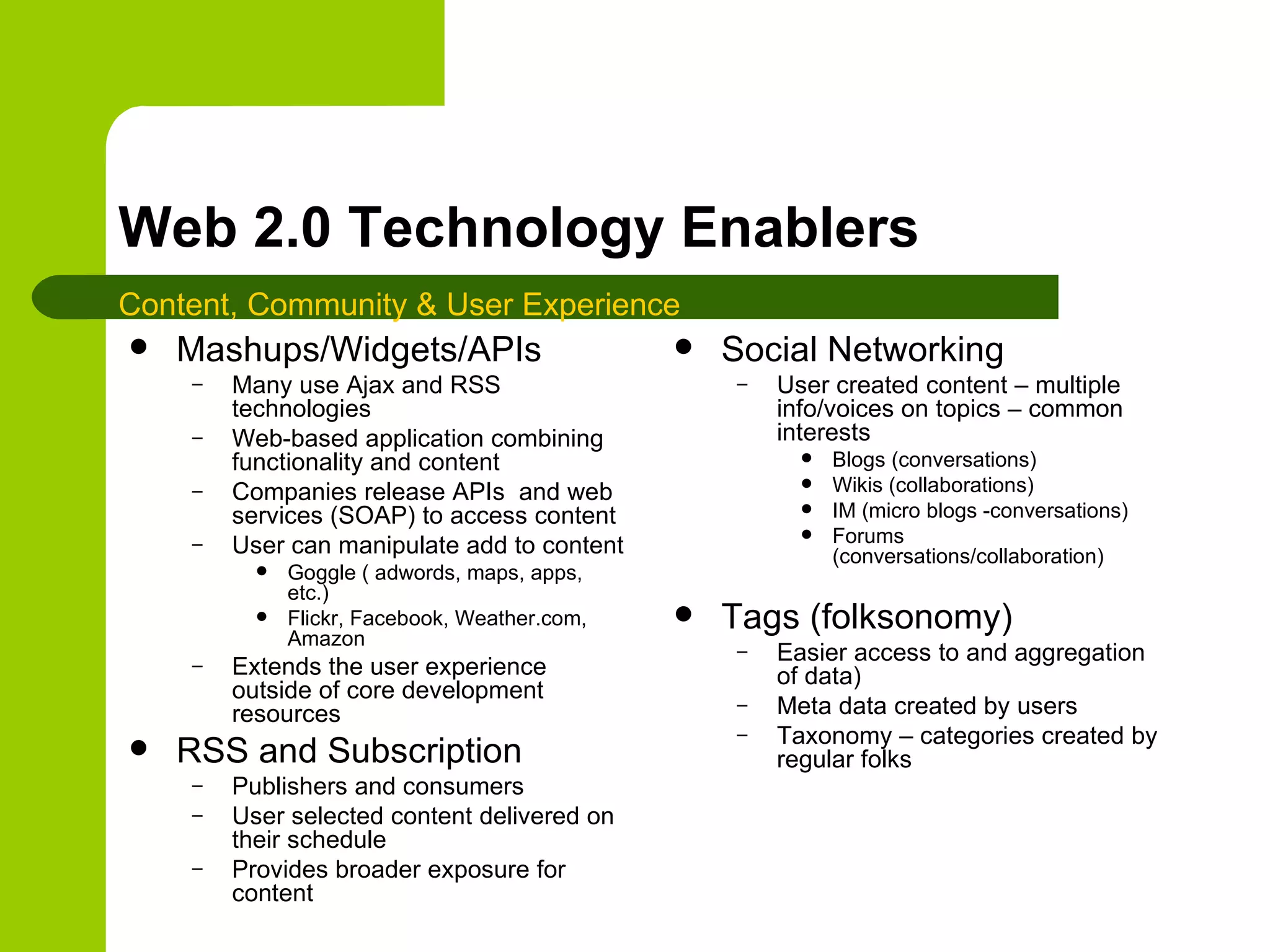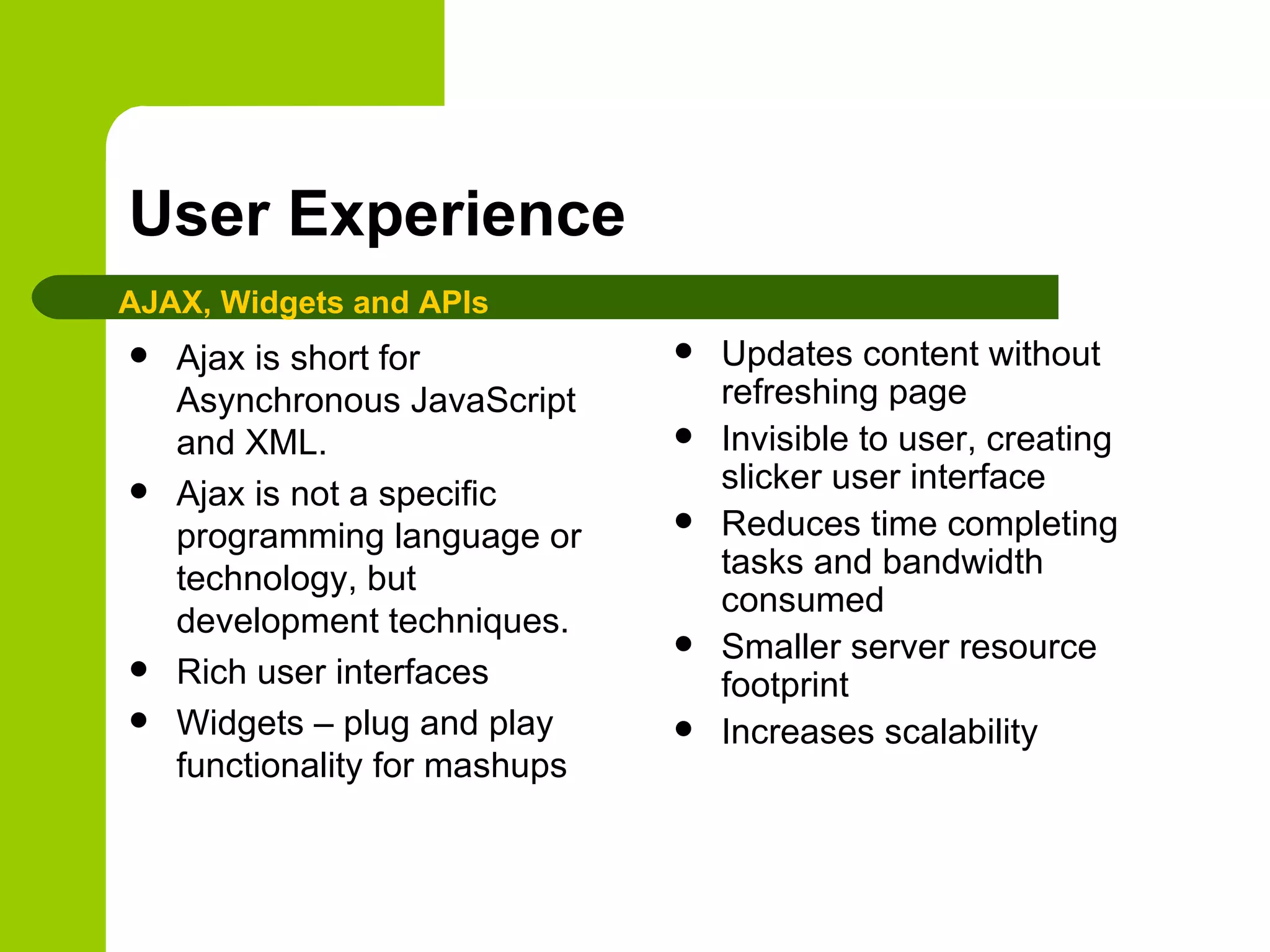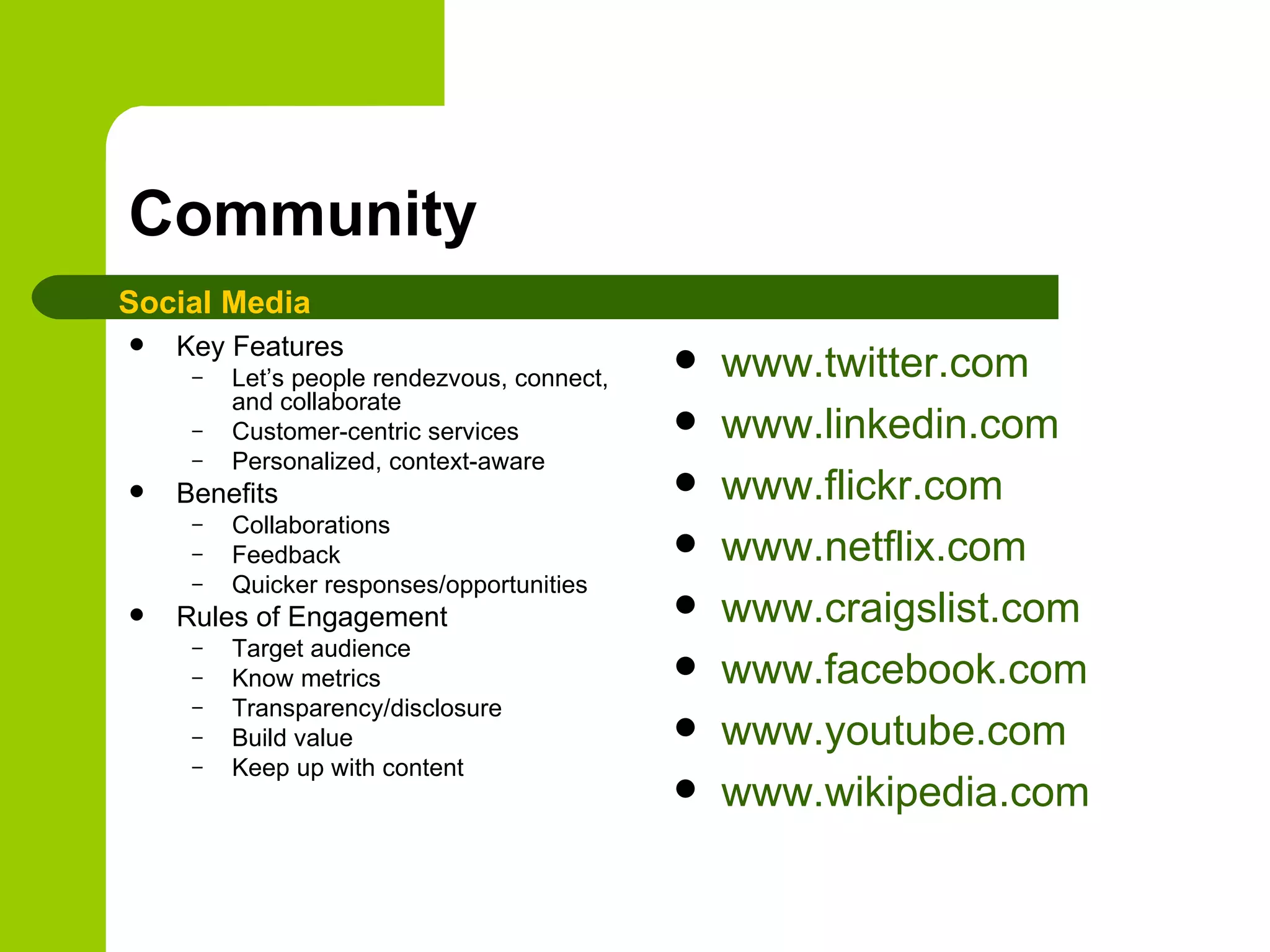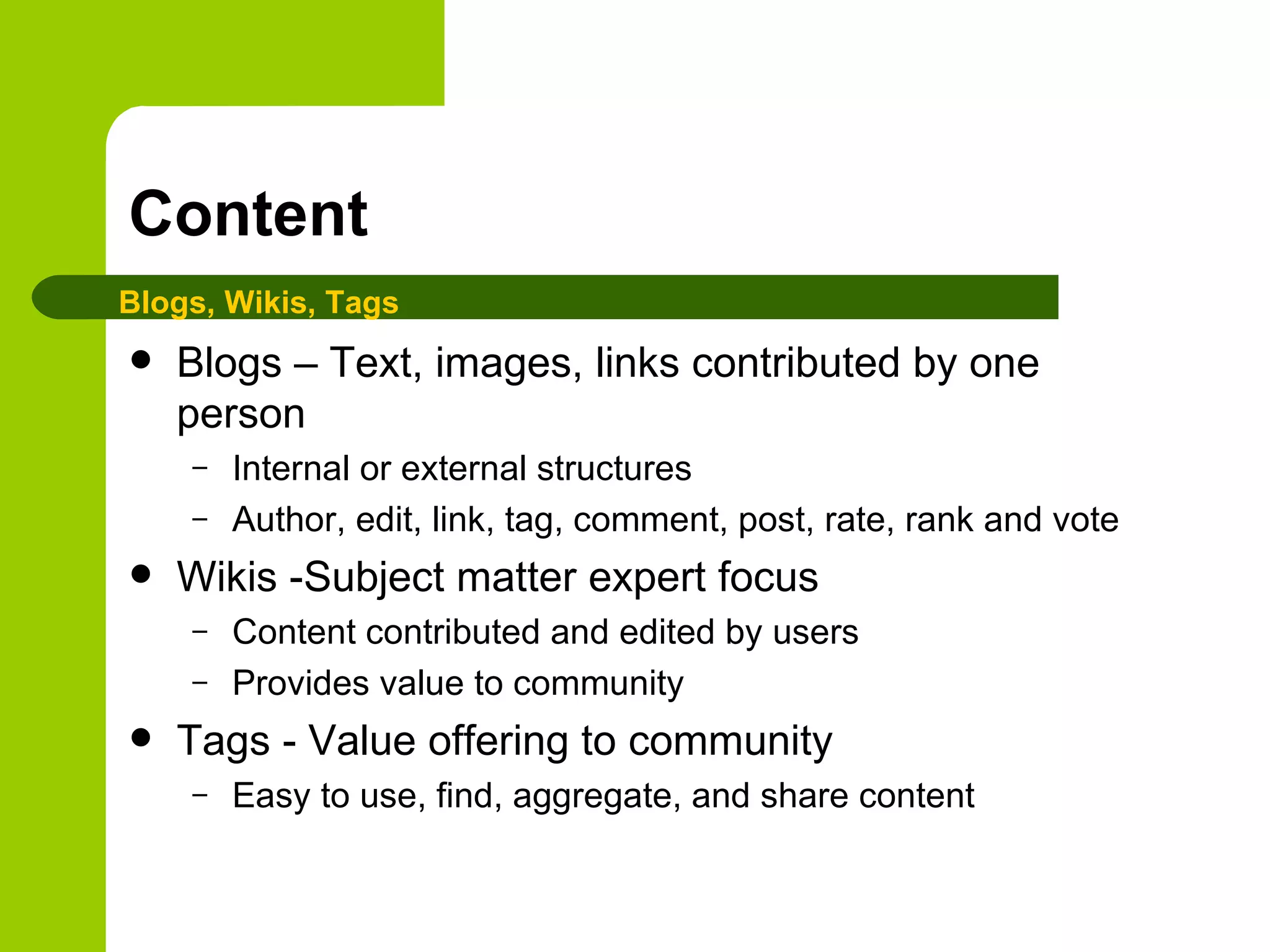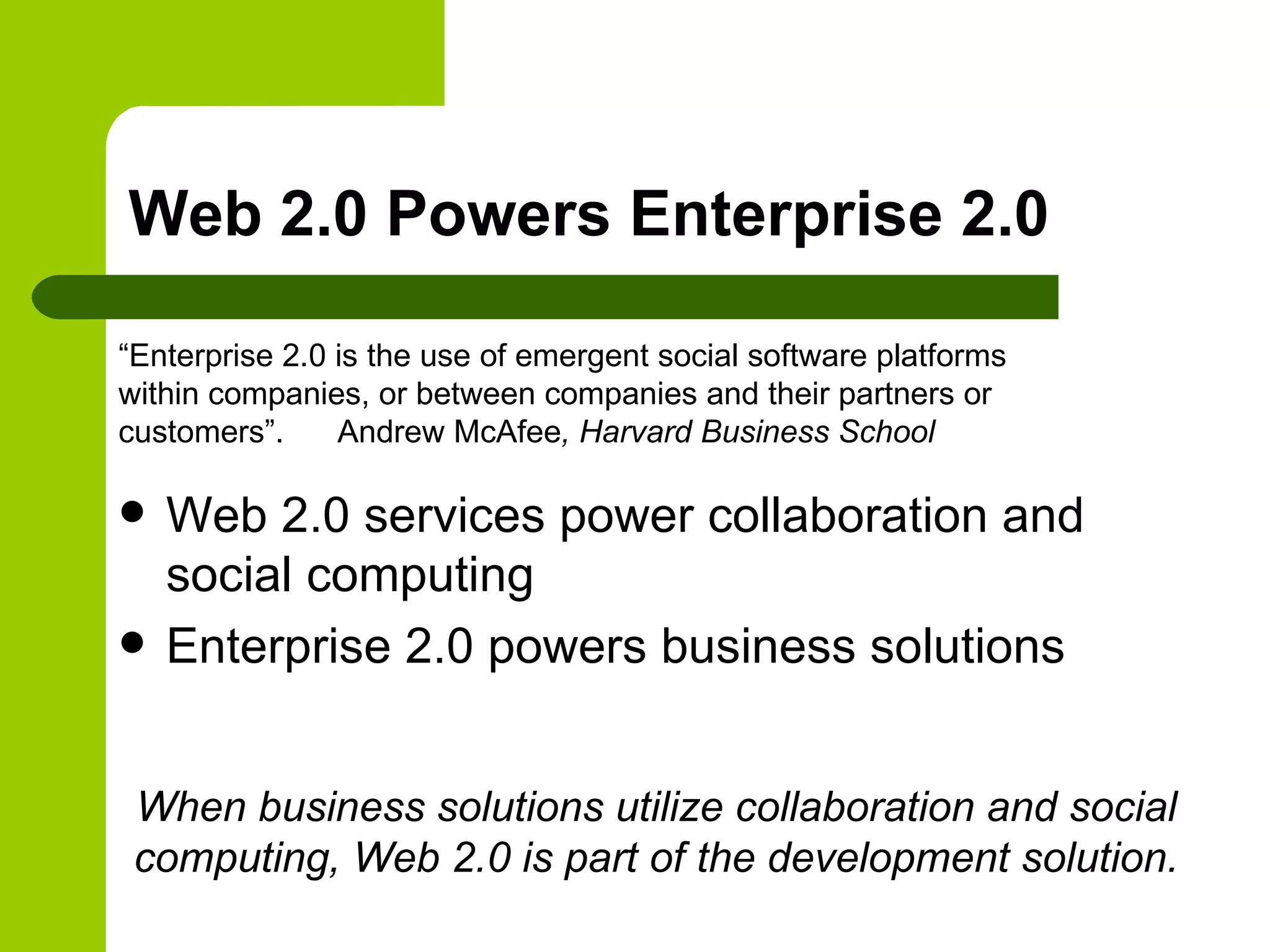The document discusses key concepts of Web 2.0 including that it focuses on content, community, and user experience through a paradigm shift. Web 2.0 enables new technologies like AJAX, widgets, APIs, and social networking to provide richer user experiences and allow users to generate, share, and collaborate on content. It emphasizes community features that let people connect and collaborate to build value through transparency and engagement.
